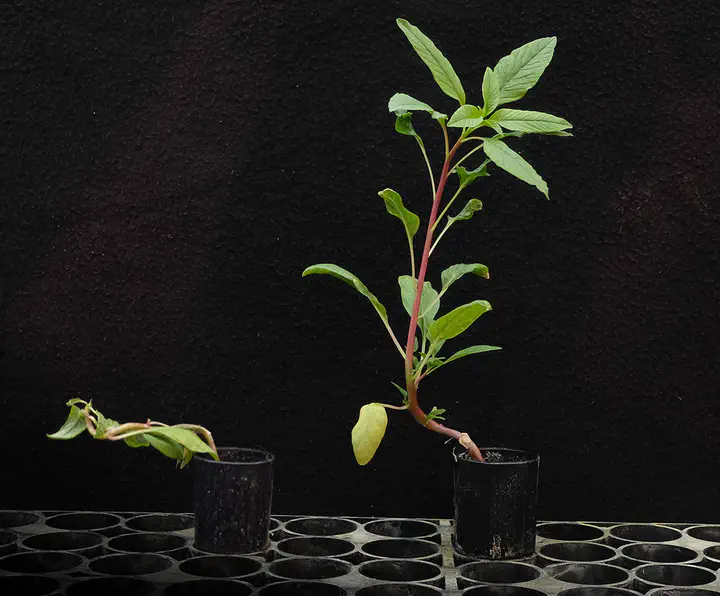Dicamba resistance evolution in Amaranthus tuberculatus
 Dicamba susceptible and resistant plants
Dicamba susceptible and resistant plantsWaterhemp [Amaranthus tuberculatus (Moq.) Sauer] is one of the most troublesome weed species in the midwestern United States. Amaranthus tuberculatus has prolific seed production and can drastically reduce soybean and corn yields by 40% to 70%, respectively. The rapid evolution and selection of herbicide-resistance traits in A. tuberculatus represent a major challenge in managing this species. Amaranthus tuberculatus resistant to acetolactate synthase (ALS) and photosystem II (PSII) inhibitors was first identified in the 1990s; currently, resistance to herbicides from seven SOA groups (Groups 2, 4, 5, 9, 14, 15, 27) has been documented.
Dicamba is a synthetic auxin herbicide that has been commercially available since the late 1960s to control a wide range of broadleaf weeds. Dicamba is an important herbicide in corn production and also in soybean following the release of dicamba-resistant soybean cultivars.
This project has the focus the characterization of first documented dicamba resistance case in Amaranthus tuberculatus. The project was divided into two steps:
- Step 1: Quantification of the resistance level and understanding of the inheritance patterns
This step was recently published on Weed Science and details can be found in the peer reviewed manuscript. In fact, the paper was featured in the cover of the journal edition and was featured in multiple News outlet.
- Step 2: Transcriptome and expression variation in Dicamba resistance waterhemp
This second step consists of an RNA-seq study to identify the putative candidate genes involved with dicamba resistance. Currently, I already identified key genes that could play a role in dicamba resistance and a manuscript is on the writing process.